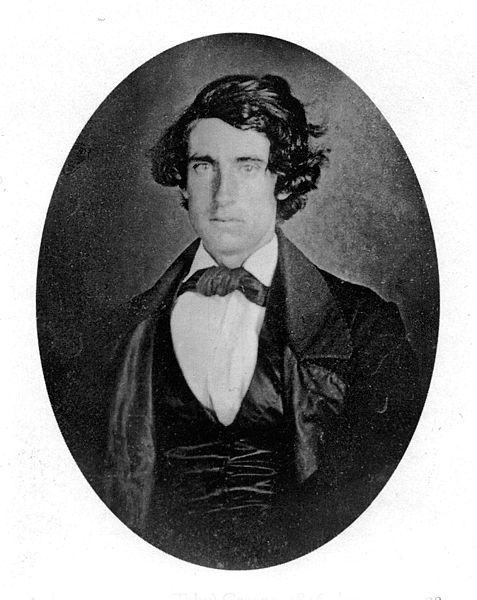Omoo: A Narrative of Adventures in the South Seas is the second book by American writer Herman Melville, first published in London in 1847, and a sequel to his first South Seas narrative Typee, also based on the author's experiences in the South Pacific. After leaving the island of Nuku Hiva, the main character ships aboard a whaling vessel that makes its way to Tahiti, after which there is a mutiny and a third of the crew are imprisoned on Tahiti. In 1949, the narrative was adapted into the exploitation film Omoo-Omoo, the Shark God.
First edition title page
Herman Melville was an American novelist, short story writer, and poet of the American Renaissance period. Among his best-known works are Moby-Dick (1851); Typee (1846), a romanticized account of his experiences in Polynesia; and Billy Budd, Sailor, a posthumously published novella. At the time of his death, Melville was no longer well known to the public, but the 1919 centennial of his birth was the starting point of a Melville revival. Moby-Dick eventually would be considered one of the great American novels.
Melville depicted in an 1870 portrait by Joseph Oriel Eaton
An 1810 portrait of Melville's father, Allan Melvill (1782–1832), by John Rubens Smith, now housed at the Metropolitan Museum of Art in New York City. In Melville's novel Pierre (1852), he fictionalized this portrait as the portrait of Pierre's father.
A c. 1815 portrait of Melville's mother Maria Gansevoort Melville by Ezra Ames, now on display at the National Gallery of Art
Richard Tobias Greene, who jumped ship with Melville in the Marquesas Islands and is Toby in Typee, pictured in 1846





